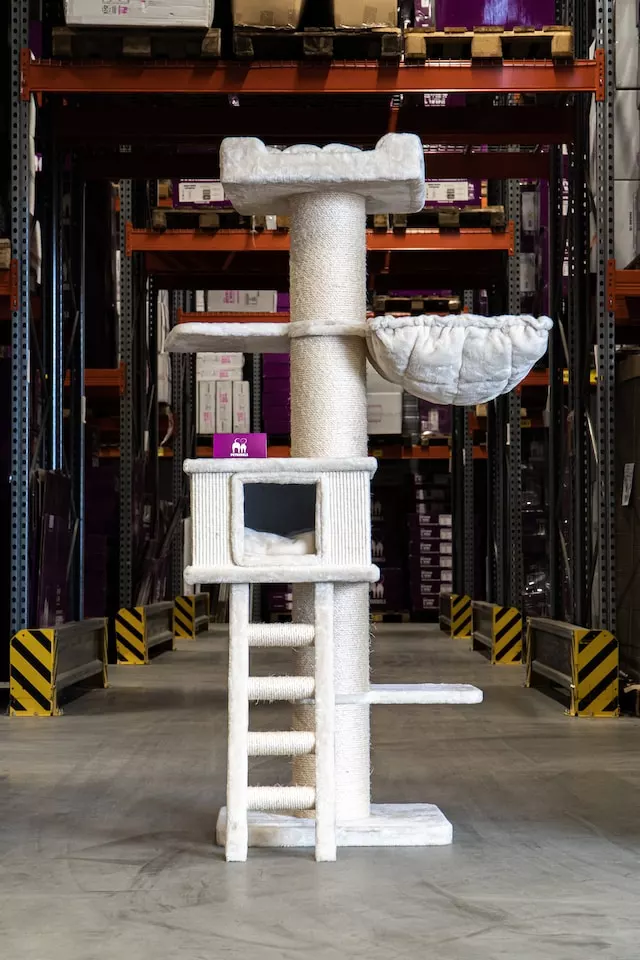Understanding the concept of weight can sometimes feel as challenging as lifting a heavy object itself.
It’s especially the case when it comes to the somewhat arbitrary figure of 20 kilograms.
But, How Heavy is 20 Kg? To help you comprehend, let’s consider everyday items that weigh approximately the same.
An average-sized Carpet

Underfoot and often underestimated, the average-sized carpet is a surprisingly hefty home essential. An 8’x10′ carpet, common for many living rooms or bedrooms, can easily weigh around 20 kilograms.
What gives a carpet this weight? Much depends on the fabric quality and the carpet’s pile density – the thickness and tightness of the weave. Carpets can be made from materials like wool, nylon, polyester, or polypropylene, each with a different weight. But a common feature of heavier carpets is a thick, plush pile.
Wool, a heavy material used in carpeting, contributes significantly to a carpet’s weight. A high-pile wool carpet with a dense weave can tip the scales toward our 20 kg mark. Additionally, the backing material – typically jute or synthetic latex – adds to the weight, providing stability and heft to the carpet.
5-Gallon Water Bottle
A 5.5-gallon water bottle is a sight common in many homes and offices, a familiar symbol of hydration. Yet, it conceals an unexpected weightiness. Fully loaded, it’s a mini gym presenting a 20-kilogram challenge that demands more than just a casual lift.
Where does this weight come from? It’s all down to the water it holds. A single gallon of water weighs approximately 3.785 kilograms.
When you multiply that by 5.5, you get around 20.8175 kilograms. The precise weight can fluctuate slightly based on the water’s temperature, but it hovers around our 20-kilogram mark.
3-tier Metal Shelf
A 3-tier metal shelf, while compact and practical, bears a surprising heft. Typically found in offices, garages, or homes, these unassuming structures can weigh around 20 kilograms, depending on their construction.
What contributes to this weight? Primarily, it’s the material. Most metal shelves are made from steel due to their robustness and longevity. Steel is a heavy-duty material; even a tiny amount can contribute significantly to the overall weight.
Furthermore, the structure of the shelf plays a role. A 3-tier metal shelf is designed for durability and load-bearing capacity. The shelves are often reinforced with additional metal supports to prevent bending or warping under the weight of stored items. This reinforcement adds to the shelf’s weight.
Small Coffe Table

Despite its modest size, a small coffee table can weigh significantly. This everyday living room piece can weigh around 20 kilograms when constructed of particular materials, such as metal.
According to Yale.edu, metal-based coffee tables tend to fall into this weight category. The chosen metals, often steel or iron, are appreciated for their strength and durability, contributing a considerable heft to the tables.
The design elements add to the table’s weight, including a solid metal base for stability and a thick slab top, which could be tempered glass or other metal.
So, your small metal coffee table is more than just a convenient spot for your coffee mug or favorite books. It’s a weighty piece of furniture that’s as substantial in its mass as in its utility.
Large Potted Plant
A large potted plant, with its leafy foliage and tranquil aura, often adds a touch of nature to our indoor spaces. However, these plants can be pretty hefty, weighing around 20 kilograms.
The weight of a large potted plant is dictated by a combination of factors: the pot, the soil, and the plant itself. A typical large pot can be made from various materials, including terracotta, ceramic, or plastic, each contributing a baseline weight.
Soil adds the most weight to a potted plant. A large pot requires a significant volume of soil, and given that a liter of soil weighs approximately 1.2 to 1.5 kilograms, the weight quickly adds up.
As for the plant, one sizable indoor variety that could tip the scale is the Fiddle Leaf Fig (Ficus lyrata). This popular indoor tree, known for its broad, glossy green leaves, can reach impressive sizes. A mature Fiddle Leaf Fig can reach the 20-kilogram mark combined with its pot and soil.
Canoe
Embarking on outdoor activities like fishing or nature sightseeing often involves a canoe symbolizing tranquil water adventures. Lightweight yet sturdy, canoes are design marvels, often weighing around 20 kilograms.
What does a 20-kilogram canoe look like? Mostly, it’s a balance between robust construction and manageability. Traditional wood or birch bark canoes are heavier, but contemporary models use thermoformed polyethylene to create lighter yet sturdy designs.
A 20-kilogram canoe is usually around 10 to 13 feet long, designed for solo explorations or a comfortable ride for two. Its length is perfect for carrying light fishing gear.
Cat Condo

You must be familiar with the cat condo when you are a cat lover. This cat-friendly furniture piece, often filled with multiple levels, a hidey-hole, and scratching posts, can add up to a substantial weight of around 20 kilograms.
So, what makes a cat condo weigh 20 kilograms? A multitude of factors contribute to this. The size, the materials used, and the additional features add up.
A sizable cat condo, for instance, those standing around 5 to 6 feet tall with multiple levels for your furry friend to explore, can weigh around our target. These structures often provide a variety of surfaces for climbing, scratching, lounging, and hiding, all of which contribute to the weight.
Materials also play a significant role. Many condos are built from a sturdy wood or heavy-duty cardboard structure, then covered in plush carpet or sisal rope for scratching. The combination of these materials contributes a significant amount of weight.
Home Stereo System
A home stereo system, the heart of any audiophile’s setup, can add a surprising weight to your living space. With its various components like speakers, amplifiers, CD players, or turntables, a complete system can weigh around 20 kilograms.
Breaking it down, the speakers and amplifiers are the primary contributors to this weight. Quality speakers made from durable materials like MDF or hardwoods provide excellent sound reproduction, but these materials also add significant weight. For instance, bookshelf speakers can easily weigh around 7 kilograms each.
The amplifier, often considered the workhorse of a stereo system, can also contribute a significant portion of the weight. Quality amplifiers often use large transformers and heat sinks, contributing to their overall heft. A mid-range amplifier can add 5 to 6 kilograms to the total weight.
Components like a CD player, turntable, or radio tuner can also contribute to the total weight. Each piece, designed with a sturdy casing and precision-engineered internals, adds a few kilograms.
50 Soccer Balls
Each regulation-size soccer ball (Size 5) weighs between 410-450 grams when inflated, as set by FIFA standards. The variation in weight depends on the materials used and the amount of air pressure inside the ball.
So, if you do the math, fifty soccer balls weighing around 410 to 450 grams together weigh between 20.5 and 22.5 kilograms.
Let’s take the lower end of this range to account for slight variations in manufacturing, putting us comfortably at around 20 kilograms for 50 soccer balls.
9 Reams of Standard Copy Paper
A standard ream of copy paper, an everyday sight in offices, schools, and homes, carries more weight than one might imagine. When you pile up nine reams, the total heft comes to approximately 20 kilograms.
Each ream contains 500 sheets of paper, typically weighing 80 grams per square meter (gsm). The standard A4 size (21cm x 29.7cm) weighs around 5 grams per sheet. Therefore, a whole ream of 500 sheets weighs about 2.5 kilograms.
Multiply that weight by nine reams, and you reach a substantial 22.5 kilograms. However, accounting for slight variabilities, such as moisture absorption by individual sheets that can marginally increase their weight, a practical estimate brings us to approximately 20 kilograms for nine reams of paper.
10 Standard Bricks
Bricks, those rectangular blocks of clay hardened by heat, are fundamental to many of our buildings and structures. When we gather ten standard bricks, they weigh approximately 20 kilograms.
A typical brick used in construction, a standard or modular brick, measures around 19 cm long, 9 cm wide, and 6.4 cm high. These dimensions can vary slightly depending on the region and manufacturing process.
The weight of a standard brick depends on its material, but generally, a brick made from commonly fired clay weighs about 2 kilograms. Clay bricks are widely used due to their durability and aesthetic appeal, making them a common choice for building projects.
So, if you’re doing the math, ten of these standard bricks come to a combined weight of about 20 kilograms. That’s the same as lifting a hefty bag of rice or a chunky car wheel!
138 Baseballs (ball)
Each standard baseball, regulated by Major League Baseball, tips the scales between 142 and 149 grams.
These balls consist of a cork and rubber core, wound tightly with yarn, and encased in two strips of white leather, secured together with signature red stitching. The assembly of these materials delivers both the tangible weight and iconic tactile experience of a baseball.
If we assume an average baseball weight of about 145 grams, quick arithmetic reveals that 138 of these balls collectively weigh slightly above 20 kilograms.
Salmon

We are all familiar with salmon, which we often find in delicious dishes. Apparently, when alive, salmon is a fish that can grow quite large, weighing up to 20 kilograms.
The Chinook, or “King” salmon, is a heavyweight in the salmon family. Native to the North Pacific Ocean and western North American river systems, the King salmon is the largest species in the Pacific salmon genus Oncorhynchus.
The average weight of a King salmon is usually around 9 to 18 kilograms, but exceptional individuals have been known to exceed 45 kilograms!
However, the lucky angler or observant wildlife enthusiast might come across a mature 20-kilogram specimen in the wild.
Such a fish would likely be a particularly old and successful individual, having navigated the perils of ocean and river environments.
Bulldog
Bulldogs are compact and muscular, with a signature wide stance and a low-slung body. They are medium-sized dogs, but their solid build gives them significant heft.
Bulldogs are known for their distinctive wrinkled face and pushed-in nose, but their sturdy body contributes to their weight.
Male Bulldogs typically weigh between 23 to 25 kilograms, while females often weigh around 18 to 23 kilograms.
However, like all dogs, weight can vary. It’s not unusual to find Bulldogs that are slightly smaller or larger than the average, with some tipping the scales at 20 kilograms.



